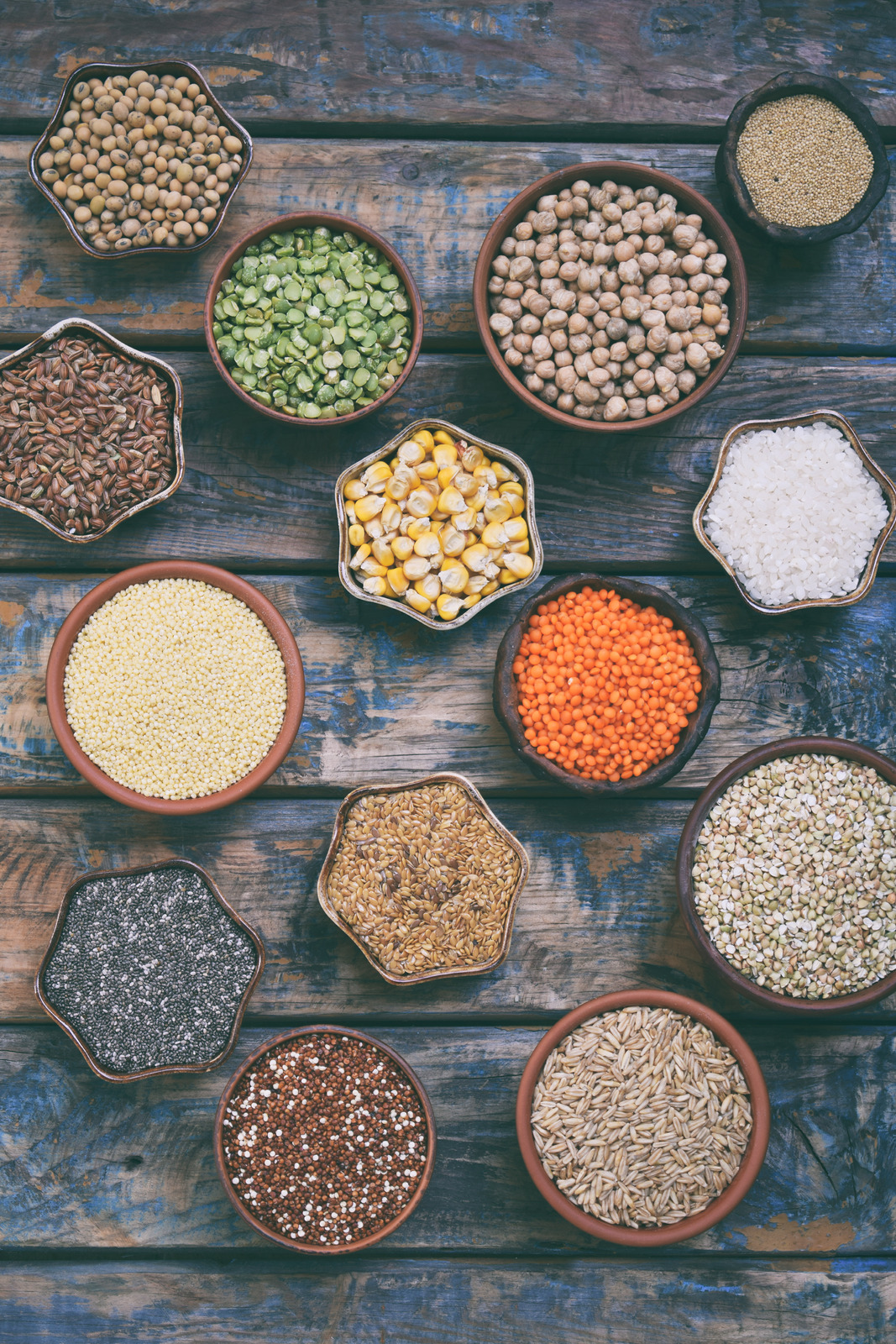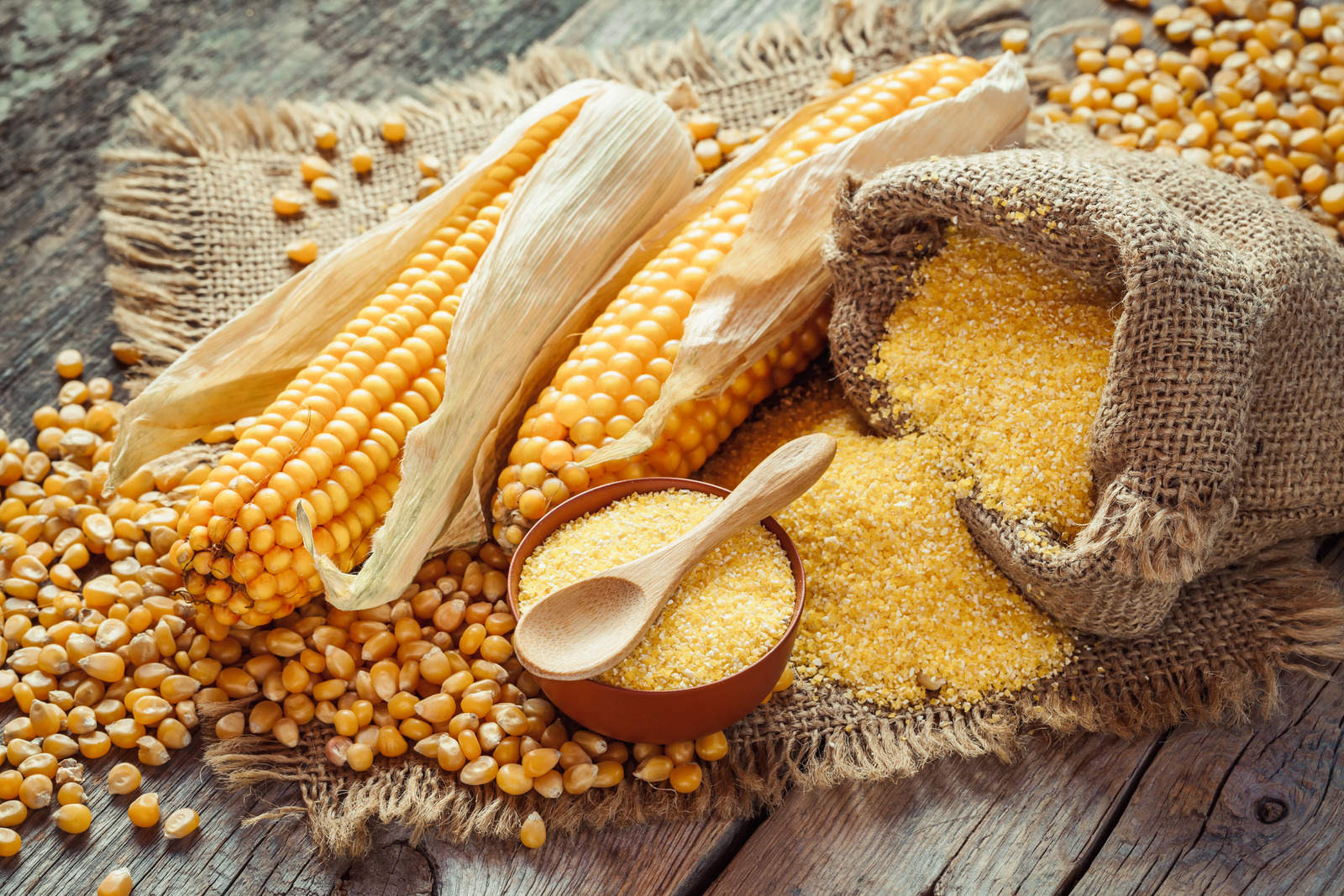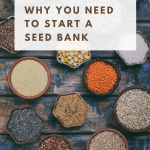
Food preservation is one of my biggest priorities when it comes to emergency or disaster preparedness. Living out in the county, with only two small-town grocery stores within a 45 minute drive, makes it even more important for our family. However, ensuring your family doesn’t go hungry is important regardless of where you live.
A seed bank is a secure way of storing seeds for future use during a major food crisis or a time when money is tight.
Use this guide to learn how to make a seed bank and understand why you need one to help your family prepare for emergencies.

What is a Seed Bank?
Personal seed banks are used to store seeds for future use. This is helpful during times of crisis when the world’s food supply is likely to be affected or during financial strain.
Why Should You Have a Seed Bank?
Relying on the government to provide adequate food during a time of need can be stressful. Not only is it not guaranteed, it also may not happen quickly enough to prevent your family from having to ration or go hungry. Unfortunately, they can’t stockpile enough food for our country and ensure it’s quick delivery to families.
When it comes to emergency preparedness, it’s better to know that your pantry is stocked and you’re well prepared to grow food while consuming it. By having a seed bank, you can do both of these. You’ll be able to preserve the food you grow and have seeds to grow in the future so your family is less likely to go hungry.

What Type of Seeds Should You Have in Your Seed Bank?
When assembling your personal seed bank, look for these types of seeds to make the best survival seed bank for your family:
- Self-pollinating seed varieties
- Not hybrid seeds
- Yields a significant amount of produce
- High in nutritional content
- A selection of seeds for the preferences of each family member
- Appropriate for your climate/hardiness zone
If you’re an inexperienced gardener, consider these easy fruits and vegetables for the beginner gardener.
Best Seeds for a Seed Bank
Beans – Beans are staples that are high in protein and fiber. They’re sturdy crops and can usually produce a significant amount of food. Consider varieties like October Beans, Black Valentine Beans, and Bountiful Beans. Most beans will provide a crop in 47-90 days.
Corn – Corn is another staple of seed banks as it can be used for so many things. Aside from plain corn, you can use it for corn meal, corn flour, hominy, grits, and more. For hearty corn, consider Reid’s Yellow Dent Corn or Stowell’s Evergreen Corn.

Cabbage – Another abundant seed to keep in your seed bank is cabbage, especially seeds similar to Copenhagen Market cabbage. These heads grow to a hefty size and can yield up to three pounds of cabbage per head. Plus, they can reach maturity in a little over two months.
Greens – Consider Bloomsdale spinach for nutrient-rich seeds that are packed with vitamin A, vitamin K, vitamin C, and folate. These can yield crops in about six weeks. Other greens, like Oakleaf loose leaf lettuce, can reach maturity in less than two months.
Beets – Looking for something with anti-inflammatory assistance? Detroit Dark Red Beets are a great choice for seeds that will yield crop in approximately two months.
Cucumbers – Bushy Cucumbers are a great, quick yield (approximately six weeks) seed to add to your survival seed bank.
Carrots – Scarlet Nantes Carrots take about two months for maturity and will be approximately 7” long.
Tomatoes – If you want something that can be eaten in a variety of ways (fresh, canned, or juiced) – opt for tomato seeds. The Brandywine, Beefsteak, and Red Cherry varieties are great options. Tomatoes offer antioxidant proprieties and are loaded with vitamins.
Squash – Waltham Butternut Squash is a great choice for 3-6 pound squash that tastes nutty in flavor.
Melon – Consider options like Crimson Sweet Watermelons (they yield 20-25 pound melons in approximately 90 days) or Green Flesh Melon (honeydew melons that are 3-6 pounds and mature in a little over 100 days.)
Herbs – If you have the space, consider keeping some of your family’s favorite herbs in your seed bank. You can add flavor to your foods, reap the health benefits, and use them to start an indoor herb garden.
Purchase a Pre-Made Seed Survival Bank
If you’d rather purchase a pre-made seed bank that’s already assembled for you, I would recommend this one. It includes many of the options above and more. Just be sure to read through the list of crop seeds included to make sure it’s a good fit for your family.
How to Store Your Seeds in Your Seed Bank
If you’re hoping to plant a survival garden, you need to properly store your seeds in your seed bank.
Many seeds come in resealable packages that can be used for long-term storage. You can get your own seed packets or consider storing them in Mylar bags or mason jars.
Once all seeds are individually stored, they can be kept together in a big or any other storage contain that is moisture proof. All seeds need to be protected from fungi, pests, bacteria, and fluctuating temperatures as well.
Keep your seeds out of the sun and try to keep the temperature where they are stored around 40 degrees. By keeping them out of the sun and locking moisture out, seeds are much more likely to last longer in your seed bank.
When to Use Your Survival Garden Seeds
While storing your seeds in your seed bank is important, using them is even more important. Using the seeds you have saved at the right time and ensuring you don’t waste them is key for a thriving survival garden.
Pay attention to your hardiness zone and the instructions for each seed. Do not plant too soon or too late to ensure you get the best crop yield.
You can also start your seeds indoors to get a jump on the growing season or use them in your edible landscaping. If you’re short on space, you can easily use them for your container gardens as well.
- Amazon Kindle Edition
- Gansneder, Danny (Author)
- English (Publication Language)
- 44 Pages - 05/06/2015 (Publication Date)
Do you have a seed bank? What seeds would be a staple for your family?



